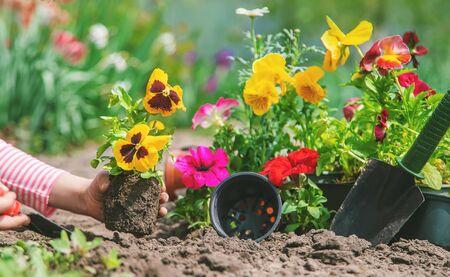1. Understanding Permaculture and Its Roots
Permaculture is a way of designing sustainable systems that work with nature instead of against it. The word “permaculture” comes from “permanent agriculture,” but over time, it has grown to mean “permanent culture” as well. At its heart, permaculture is about creating long-lasting, self-sufficient ways of living that care for the earth, people, and future generations.
Where It All Began
Permaculture was first developed in the 1970s by two Australians: Bill Mollison, a scientist and teacher, and David Holmgren, who was then a student. They were concerned about industrial farming practices that were damaging ecosystems and harming communities. Together, they created a design system that used natural patterns to build more sustainable ways of growing food and living harmoniously with the environment.
The Core Ethics of Permaculture
From the very beginning, permaculture was built on three core ethics:
| Ethic | Description |
|---|---|
| Earth Care | Protecting natural systems and regenerating damaged environments |
| People Care | Supporting healthy communities and individual well-being |
| Fair Share | Using resources wisely and sharing surplus with others |
From Australia to the World
What started as an idea in Australia has now spread around the globe. Today, people everywhere—from suburban homeowners in the U.S. to farmers in Africa—are using permaculture principles to grow food, build homes, manage water, and live more sustainably. In the United States, permaculture has taken root in urban gardens, community farms, eco-villages, and even school programs.
A Living Movement
Permaculture isnt just a set of gardening tips—its a mindset. Its about observing nature closely and designing human systems that mimic natural ones. By doing this, we can create solutions that are both effective and long-lasting. As more people face climate change and resource shortages, permaculture offers practical tools for building a better future.
2. Core Ethics of Permaculture
Permaculture isn’t just about growing food—its a way of thinking and living that supports a sustainable future. At the heart of permaculture are three core ethics that guide every decision: Earth Care, People Care, and Fair Share. These ethics help us live in harmony with nature, support our communities, and use resources wisely.
Earth Care: Respecting and Nurturing Nature
The first ethic, Earth Care, reminds us that all life depends on a healthy planet. In practical terms, this means protecting soil, water, air, and biodiversity. Whether you’re composting kitchen scraps or planting native species in your backyard, every action helps restore natural systems.
Simple Ways to Practice Earth Care:
| Action | How It Helps the Earth |
|---|---|
| Mulching garden beds | Conserves moisture and builds soil health |
| Planting trees | Improves air quality and provides habitat for wildlife |
| Reducing chemical use | Protects soil microbes and nearby waterways |
People Care: Supporting Ourselves and Others
This ethic focuses on meeting human needs in a compassionate and sustainable way. People Care encourages healthy relationships, education, equity, and community well-being. It reminds us to take care of ourselves so we can also care for others—whether that means sharing knowledge, growing food together, or simply checking in on a neighbor.
Ways to Practice People Care:
- Create or join a local community garden
- Share skills like seed saving or composting with friends
- Design spaces that are accessible and welcoming to all ages
Fair Share: Redistributing Surplus for the Common Good
The third ethic, sometimes called “Return of Surplus,” is all about balance. It asks us to limit consumption and share excess resources—be it time, harvests, or knowledge—to ensure everyone has enough. Fair Share promotes equity while preventing overuse of the Earths limited resources.
Examples of Fair Share in Action:
| Resource Shared | Benefit to Community |
|---|---|
| Extra produce from your garden | Helps feed neighbors or supports local food banks |
| Your time volunteering at workshops | Educates others and strengthens community bonds |
| Sustainable gardening tips online | Makes knowledge accessible to more people worldwide |
Together, these three ethics shape how we design gardens, homes, communities—and even lifestyles. By keeping Earth Care, People Care, and Fair Share in mind, we can make choices that support both our personal well-being and the planet’s future.
![]()
3. Permaculture Design Principles
Permaculture is more than just a method of gardening—its a mindset and a design approach that helps us live in harmony with nature. At the heart of permaculture are twelve core design principles developed by David Holmgren, co-originator of permaculture. These principles guide how we plan and manage our gardens, homes, farms, and even communities to be more sustainable, efficient, and regenerative.
Understanding the 12 Principles
Each principle offers a practical way to observe, interact with, and respond to the natural world around us. Whether youre planting a backyard garden or designing a community farm, these principles help you make better choices for long-term resilience and productivity.
The Twelve Permaculture Principles
| Principle | Description |
|---|---|
| 1. Observe and Interact | Spend time watching how nature works before making changes. Learn from what you see. |
| 2. Catch and Store Energy | Make use of resources like sunlight, rainwater, and compost to build long-term energy reserves. |
| 3. Obtain a Yield | Ensure your systems provide useful rewards—food, shelter, energy—to support your needs. |
| 4. Apply Self-Regulation and Accept Feedback | Be open to learning from mistakes and adjust your practices when needed. |
| 5. Use and Value Renewable Resources | Choose materials and energy sources that naturally replenish themselves over time. |
| 6. Produce No Waste | Find ways to reuse, recycle, or compost everything so nothing goes to waste. |
| 7. Design From Patterns to Details | Start with big-picture patterns (like sun movement or water flow) before focusing on small elements. |
| 8. Integrate Rather Than Segregate | Create systems where plants, animals, and people support each other through thoughtful placement. |
| 9. Use Small and Slow Solutions | Start small and scale up as needed—slow solutions are often more sustainable over time. |
| 10. Use and Value Diversity | Diversity creates strength—grow different crops, raise various animals, and encourage ecological variety. |
| 11. Use Edges and Value the Marginal | The edges of things—like pond banks or garden borders—are often the most productive spaces. |
| 12. Creatively Use and Respond to Change | Change is constant; embrace it by being flexible and innovative in your designs. |
Why These Principles Matter
The beauty of these principles is that they’re adaptable to any scale—from urban balconies to large-acre farms—and they’re designed to work with nature instead of against it. By following them, we create spaces that are not only productive but also resilient during tough times like droughts or economic downturns.
A Practical Example: Applying the Principles at Home
| Scenario | PDC Principle Applied |
|---|---|
| You want to reduce your water bill in your home garden. | Catch and Store Energy – Set up rain barrels to collect water for irrigation. |
| Your vegetable garden has pest issues every season. | Use and Value Diversity – Add companion plants that attract beneficial insects or repel pests naturally. |
| You’re planning a new layout for your backyard space. | Design from Patterns to Details – First study how sunlight moves across your yard before placing beds or trees. |
A Living System That Works for You
The twelve design principles are tools you can rely on again and again as you grow your understanding of permaculture. They help you build systems that are not only environmentally sound but also deeply rewarding in everyday life. Whether youre just starting out or refining your existing setup, these principles serve as both inspiration and guidance on your journey toward sustainable living.
4. Practical Applications in Home and Community Settings
Permaculture isnt just for large-scale farms or rural homesteads—its a mindset that can be applied in everyday life, whether youre living in a suburban neighborhood, a city apartment, or managing a small farm. Lets explore how you can bring permaculture principles into your home, garden, and community to create more sustainable and self-reliant systems.
Household Habits that Reflect Permaculture Thinking
Your home is the first place where you can implement permaculture ethics like care for the earth, care for people, and fair share. These habits may seem small, but they contribute to a larger system of sustainability:
| Habit | Description |
|---|---|
| Composting | Turn kitchen scraps into nutrient-rich compost for your garden instead of sending them to the landfill. |
| Rainwater Harvesting | Collect rainwater from roofs using barrels to water plants and reduce dependence on municipal water. |
| Energy Conservation | Use energy-efficient appliances and unplug devices when not in use to reduce electricity usage. |
| DIY Cleaning Products | Create natural cleaners with vinegar and baking soda to avoid chemicals that harm soil and water systems. |
Community Gardens: Growing Together
A community garden is a great way to practice permaculture by sharing resources, building local food resilience, and fostering relationships. Apply zone planning by placing frequently harvested crops near walkways and less frequent ones farther away. Use vertical gardening techniques to maximize space in urban plots. Companion planting—like tomatoes with basil—helps naturally deter pests and improve yields without chemicals.
Urban Landscapes as Productive Spaces
Cities often have underused spaces like rooftops, sidewalks, or vacant lots that can be turned into green oases. Here are some ideas:
- Rooftop Gardens: Grow vegetables or pollinator plants on rooftops to insulate buildings and produce food locally.
- Pocket Parks: Convert small areas into edible landscapes with fruit trees, herbs, or berry bushes.
- Bioswales: Design shallow ditches filled with native plants to manage stormwater runoff naturally.
Small Farms: Integrating Permaculture Systems
If youre working with a few acres of land, permaculture can help you create closed-loop systems that minimize waste and external inputs. Some practical applications include:
- Paddock Rotation: Move livestock through different pasture sections to improve soil fertility and prevent overgrazing.
- Pond Integration: Use ponds not only for irrigation but also as habitats for ducks or fish that feed on pests.
- Diverse Crop Planning: Mix perennials with annuals to ensure year-round harvests and increase ecosystem stability.
Simplified Permaculture Strategies by Setting
| Setting | Main Focus | Sustainable Practice Example |
|---|---|---|
| Home | Reduce waste & save resources | Create a compost bin for food scraps |
| Community Garden | Cultivate shared food sources | Add companion planting beds |
| Urban Space | Create green infrastructure | Add container gardens along sidewalks |
| Small Farm | Create closed-loop systems | Mimic natural ecosystems with polycultures |
No matter where you live, applying permaculture thinking helps build healthier environments and more connected communities. Its all about observing your surroundings, making intentional choices, and valuing natures patterns as solutions for modern living.
5. Adapting Permaculture to the American Landscape
Permaculture is not a one-size-fits-all solution. The United States is home to a wide range of climates, ecosystems, and cultural traditions, so it’s important to adapt permaculture practices to fit local conditions. Whether youre in the arid Southwest, the humid Southeast, or the temperate Pacific Northwest, successful permaculture starts with understanding your specific environment.
Understanding Your Local Climate
Different parts of the U.S. experience unique weather patterns that influence what you can grow and how you manage water, soil, and plants. Here’s a simple overview of some common U.S. climate zones and key considerations for each:
| Region | Climate Traits | Permaculture Focus |
|---|---|---|
| Southwest (e.g., Arizona, New Mexico) | Hot, dry, low rainfall | Water harvesting, drought-tolerant plants, shade structures |
| Southeast (e.g., Florida, Georgia) | Hot, humid, high rainfall | Drainage management, tropical perennials, pest control strategies |
| Northeast (e.g., New York, Massachusetts) | Cold winters, moderate summers | Seasonal planning, cold-hardy crops, food storage techniques |
| Pacific Northwest (e.g., Oregon, Washington) | Mild temperatures, high rainfall | Rainwater diversion, fungal-friendly crops, erosion control |
| Midwest (e.g., Illinois, Minnesota) | Cold winters, hot summers | Diverse planting schedules, windbreaks, soil regeneration |
Cultural Considerations in Permaculture Design
Permaculture isn’t just about growing food—it’s also about creating systems that reflect and support local communities. When designing your space:
- Connect with Local Traditions: Integrate native plants and traditional gardening methods used by Indigenous peoples and long-standing local cultures.
- Support Community Goals: Create shared garden spaces or food forests that provide access to fresh produce and bring people together.
- Use Local Materials: Build with resources available in your region to reduce environmental impact and support the local economy.
Ecosystem Diversity Across the U.S.
The U.S. features deserts, forests, prairies, wetlands, and coastal zones—all with different ecological needs. Understanding your ecosystem helps you choose plants and animals that naturally thrive there. For example:
- Pine Forests: Great for mushroom cultivation and shade-loving understory crops.
- Prairies: Ideal for perennial grains and deep-rooted nitrogen fixers like prairie clover.
- Wetlands: Support aquatic plants like cattails and provide habitat for beneficial wildlife.
- Coastal Areas: Require salt-tolerant species and wind-resistant design elements.
Quick Tips for Adapting Permaculture Locally
- Observe First: Spend time watching how sun, wind, and water move through your land before making changes.
- Create Microclimates: Use fences, trees, or buildings to create sheltered spots for sensitive plants.
- Select Native Species: Native plants are adapted to local conditions and require less maintenance.
- Add Layers: Mimic natural ecosystems by combining trees, shrubs, vines, ground covers, and root crops.
- Tweak as You Go: Permaculture is flexible—keep adjusting based on what works best in your area.
Your Backyard Can Reflect the Best of Your Region
No matter where you live in the United States—from the high deserts of Utah to the bayous of Louisiana—you can shape your landscape into a thriving permaculture system tailored to your local environment. By learning from nature and respecting regional differences in climate and culture, youll create a sustainable space that gives back more than it takes.


